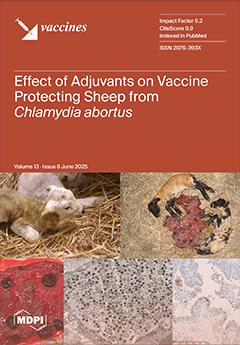Background: The introduction of biological drugs into clinical practice for the treatment of children with systemic juvenile idiopathic arthritis (sJIA) allows disease control but increases the risk of infectious events. Infectious events cause immunosuppressive therapy interruptions, leading to disease flare and life-threatening complications, namely macrophage activation syndrome. Our study aimed to evaluate the efficacy and safety of simultaneous vaccination against pneumococcal and Haemophilus influenzae type b (Hib) in children with sJIA.
Methods: This study included 100 sJIA patients receiving immunosuppressive therapy who were simultaneously vaccinated against pneumococcal and Haemophilus influenzae type b (Hib) infections. The mean age of disease onset was 5.5 years. The median age at vaccination was 10 ± 4.5 years. Clinical and laboratory parameters of sJIA activity, immunization efficacy, and safety, including anti-SP and anti-Hib IgG antibodies, as well as all vaccination-related adverse events (AEs), were recorded in every patient before, 3 weeks after, and 6 months after vaccination.
Results: At the time of vaccination, 29% of patients did not meet the criteria for the inactive disease stage, as defined by C. Wallace: active joints were present in 34.5% of patients, systemic manifestations (rash and/or fever) were present in 41.3%, and 24.2% of patients had solely inflammatory laboratory activity. The protective titer of anti-SP and anti-Hib IgG antibodies was detected in the majority of patients 3 weeks after vaccination (100% and 93%, respectively). The results remained unchanged (99% and 92%, respectively) for 6 months of follow-up, compared to the baseline (91% and 37%,
p = 0.000001). Anti-SP IgG and anti-Hib titers raised from 48.3 (18.2; 76.5) and 0.64 (0.3; 3.2) U/mL at the baseline to 103.5 (47.3; 185.4) and 4 (3.5; 4.2) U/mL at D22 and 105 (48.7; 171.8) and 4 (3.8; 4) U/mL (EOS), respectively. Immunosuppressive therapy regimens (combined therapy or biological disease-modifying antirheumatic drug monotherapy) did not influence the immunogenic efficacy of vaccination. The incidence of infectious complications (
p = 0.0000001) and antibiotic prescriptions (
p = 0.0000001) decreased by more than two times, to 29.9 and 13.8 events per 100 patient months, respectively, within 6 months after vaccination—the average duration of acute infectious events was reduced by five times after immunization (
p = 0.0000001). Vaccination did not lead to disease flare: the number of patients with active joints decreased by half compared to the baseline, and the number of patients with systemic manifestations decreased by six times. All vaccine-associated adverse events were considered mild and resolved within 1–2 days.
Conclusions: Simultaneous vaccination against pneumococcal and Hib infections in sJIA children is an effective and safe tool that reduces the number and duration of infectious events and does not cause disease flare-ups.
Full article






